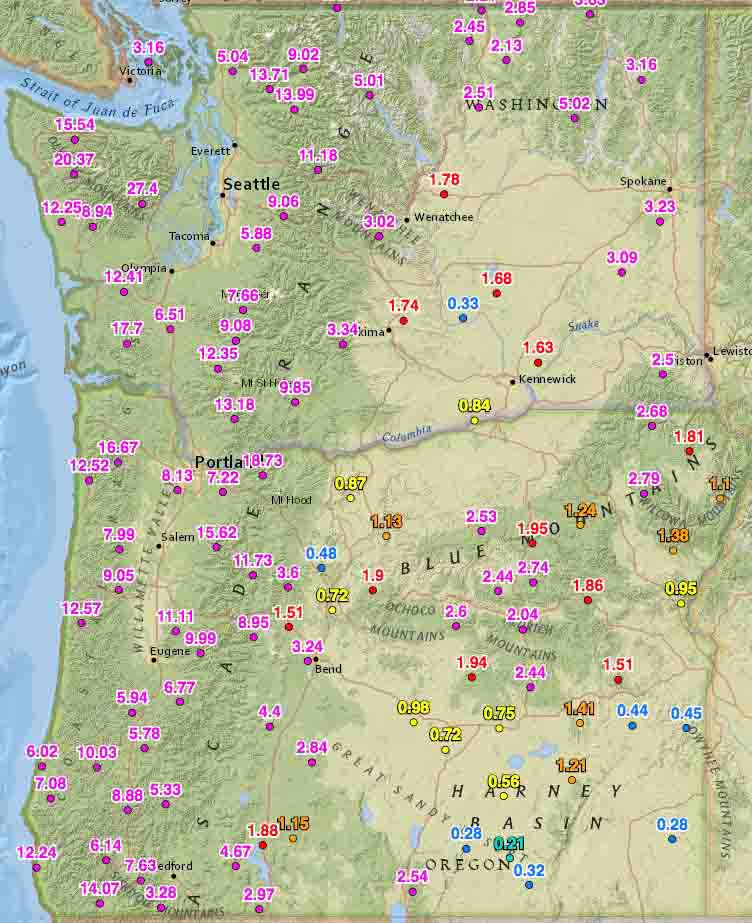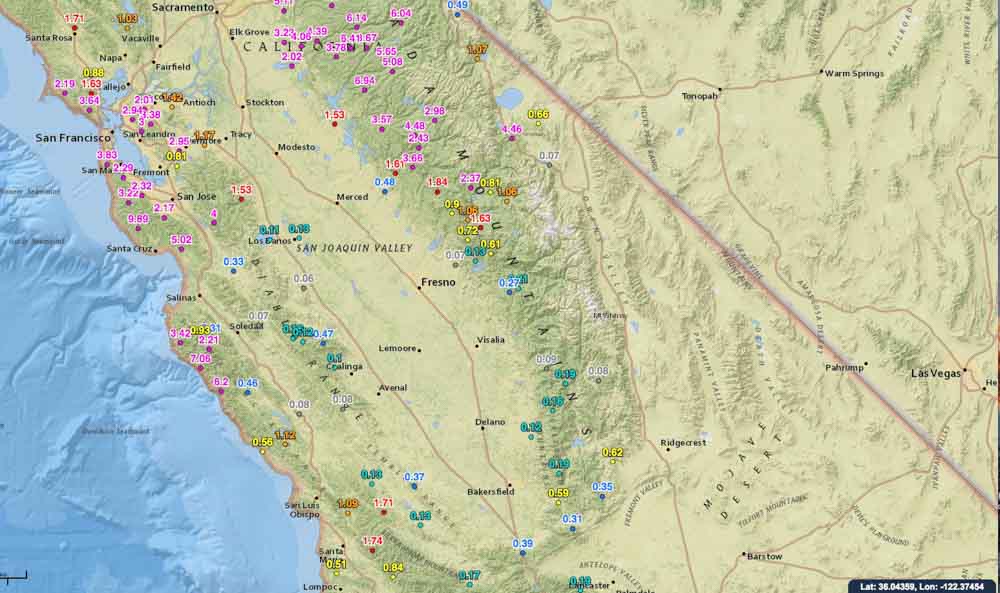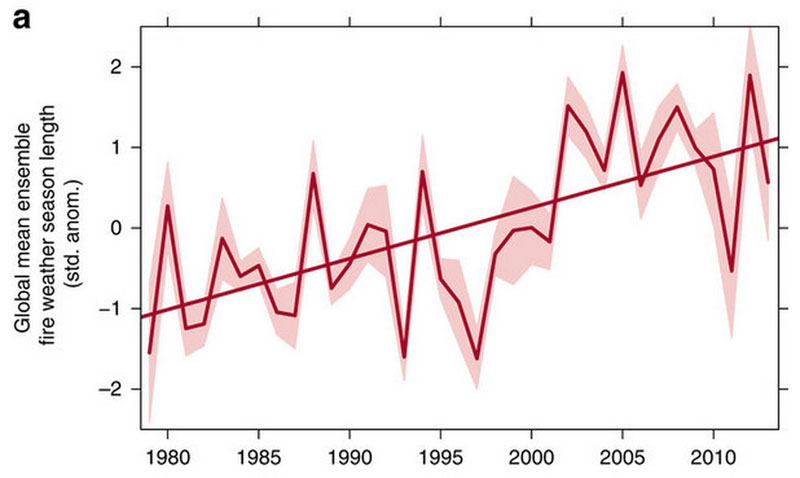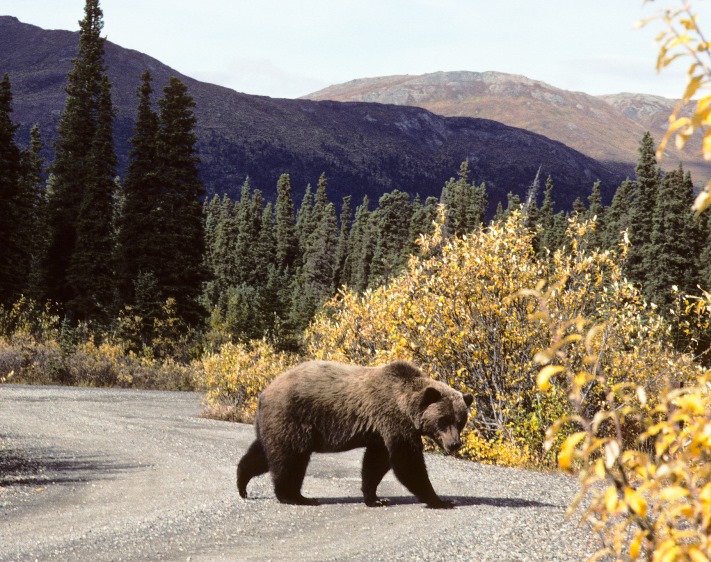The acreage burned to date in California is less than a third of the state’s 5-year average, according to Cal Fire, and experts attribute the lower numbers to the historic winter storms and a record snowpack in the Pacific Southwest. But those “atmospheric river” storms resulted in huge fuels growth that could, with gusty autumn winds, mean wildfires into November or even December.
“Now is not the time for people to let their guard down,” said Brian Newman, assistant chief of Cal Fire’s Amador-El Dorado Unit. “We still have fire season ahead of us before we get into winter rains that would finally end it.”

California’s dry, windy, and hot weather conditions from spring through late autumn can produce moderate to severe wildfires. Pre-1800, when the area was much more forested and the ecology also much more resilient, 4.4 million acres of forest and shrubland burned each year. California land area totals about 100 million acres; since 2000 annual burned acreage has ranged between 90,000 acres (0.09 percent of the state), and 1,590,000 acres (1.59 percent). During the 2020 wildfire season alone, over 8,100 fires contributed to the burning of nearly 4.5 million acres of land.
According to the Sacramento Bee, with 317,191 acres burned so far this year, that’s under 30 percent of the 5-year average of 1.2 million acres for the same year-to-date period. Even though this season’s totaled a “normal” number of new fires, the extra precipitation and cool nights kept the acreage down. Without a dramatic weather change in the next couple of months, California will be experiencing its second straight year of mild wildfire season.
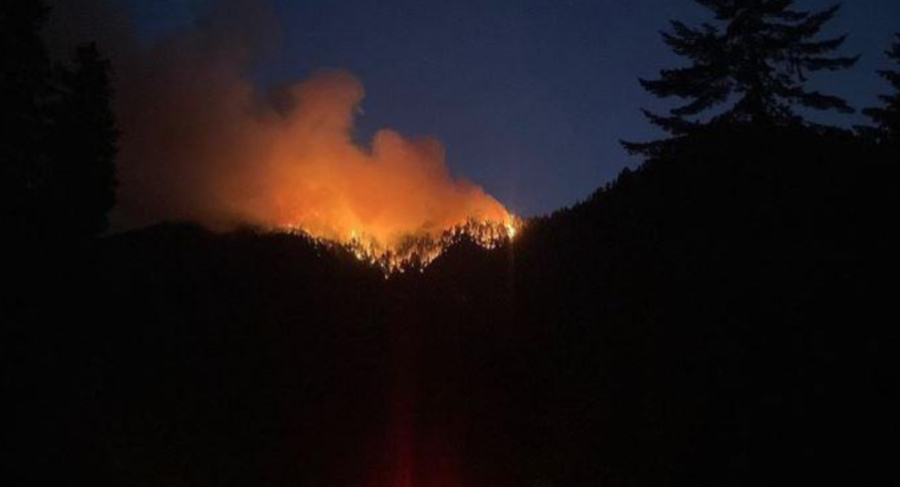
Last year, fewer than 363,000 acres burned. This year’s largest fire, the Smith River Complex near the Oregon border, totaled 95,017 — under 100,000 acres. In 2020 approximately 4.3 million acres burned, and in 2021, 2.6 million acres. Climate scientists are confident that warming temperatures have increased the severity and length of fire seasons, but many hesitate to actually attribute California’s mild 2023 wildfire season to climate change. “I tend not to give much credence to the idea that single events and single summers or winters can be ascribed to climate change,” said Hugh Safford, chief scientist of Vibrant Planet and faculty at the UC Davis Department of Environmental Science and Policy.
“There’s no question that climate warming is having a major impact on expanding the fire season and increasing severity,” he said. “But California has the highest inter-annual variability and precipitation of any state in the United States. It is normal to go from a record wet year to a record — or nearly record — dry year, and that’s just the way it is.”
 According to the Daily Mail, Patrick T. Brown, a lecturer at Johns Hopkins University, says he deliberately omitted a key fact in a climate change piece recently published to ensure that editors would run it — the fact that 80 percent of wildfires are human-caused. Brown gave as an example a Nature paper he recently authored, “Climate warming increases extreme daily wildfire growth risk in California.” Brown said the paper focuses exclusively on how climate change has affected extreme wildfire behavior — but ignores other key factors.
According to the Daily Mail, Patrick T. Brown, a lecturer at Johns Hopkins University, says he deliberately omitted a key fact in a climate change piece recently published to ensure that editors would run it — the fact that 80 percent of wildfires are human-caused. Brown gave as an example a Nature paper he recently authored, “Climate warming increases extreme daily wildfire growth risk in California.” Brown said the paper focuses exclusively on how climate change has affected extreme wildfire behavior — but ignores other key factors.
He said academic journals now reject papers that don’t “support certain narratives” and said the media focus on climate change as the root cause of wildfires — including the recent devastating fires in Hawaii. Brown wrote in a piece for The Free Press that this distorts a great deal of climate science research.
But the climate models seen by Erwan Monier, associate professor of climate change impacts at UC Davis Department of Land, Air and Water Resources, make him predict that this upcoming year’s combination of a strong El Niño and warmer ocean temperatures could mean another wet year. “This is most likely the configuration that will control California’s climate this winter,” he said, “and will have implications for the next wildfire season. Because if we have another very wet winter, that means we’ll have even more moisture that could again lead to mild fires next year.”

-
-
- We already see effects that scientists predicted, such as the loss of sea ice, melting glaciers and ice sheets, sea level rise, and more intense heat waves.
- Scientists predict global temperature increases from human-made greenhouse gases will continue. Severe weather damage will also increase and intensify.
-
Global climate change is not a future problem. Changes to Earth’s climate, driven by increased human emissions of heat-trapping greenhouse gases, are already creating widespread effects on the environment: glaciers and ice sheets are shrinking, river and lake ice is breaking up earlier, plant and animal geographic ranges are shifting, and plants and trees are blooming sooner. Wildfires and fire seasons are just a piece of the many changes that are coming — changes that are here now.


